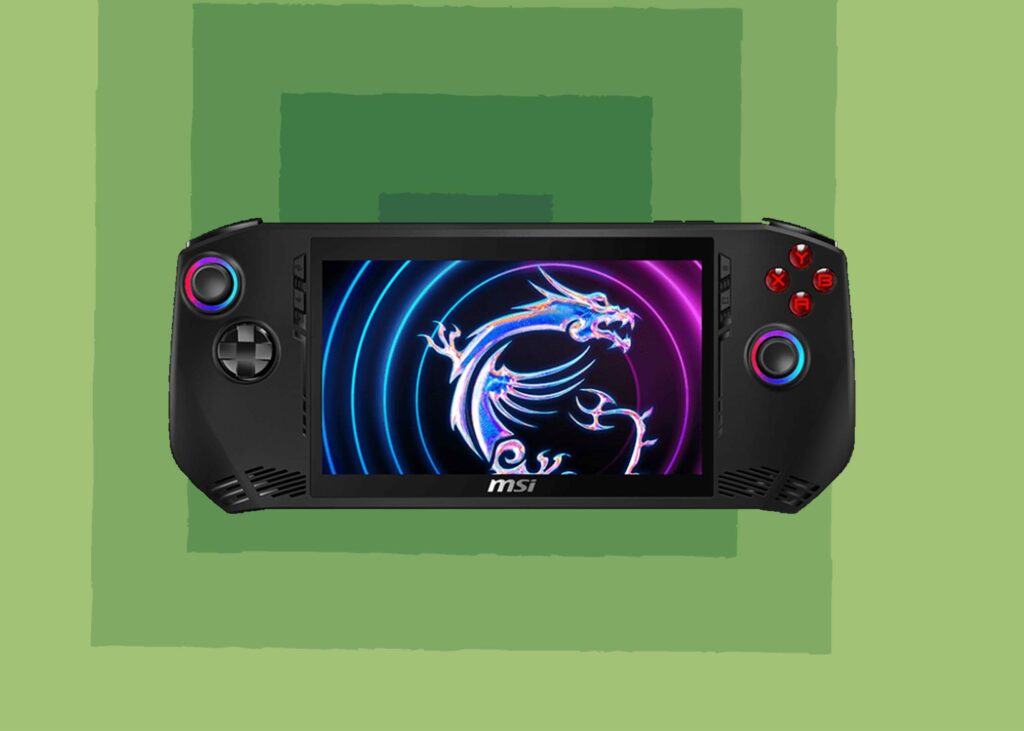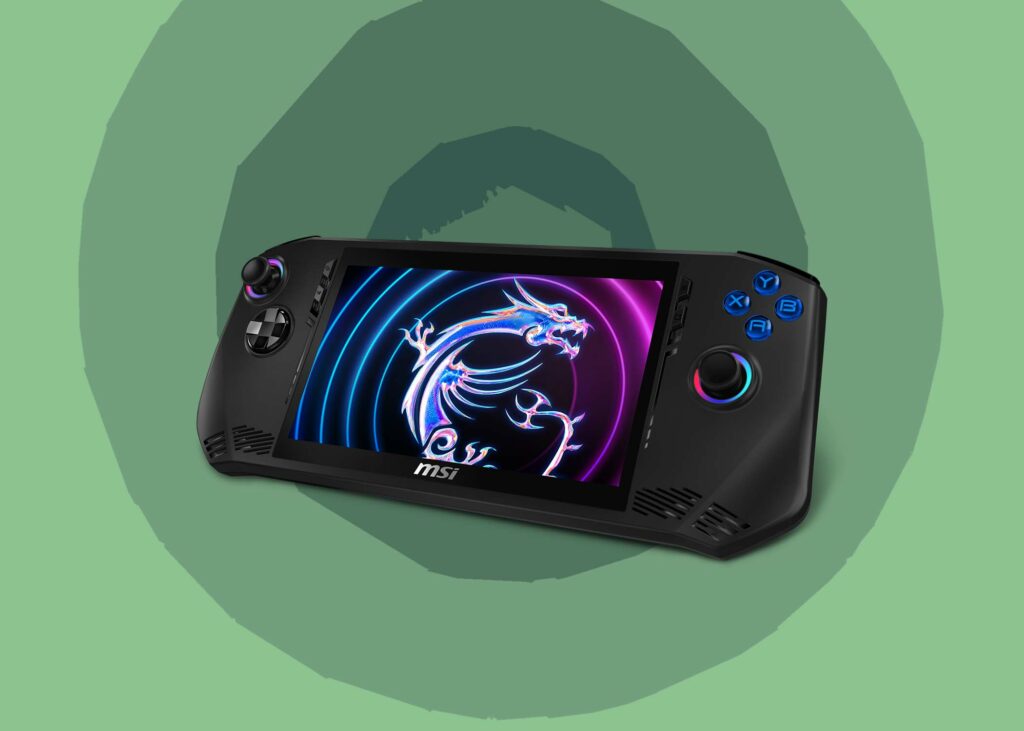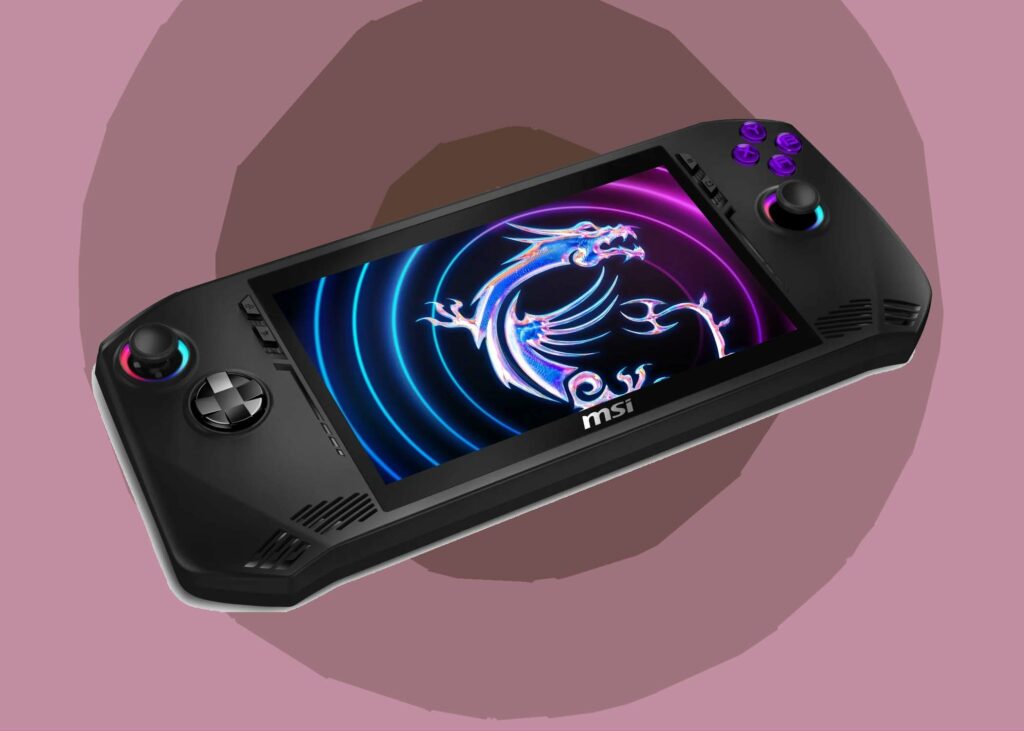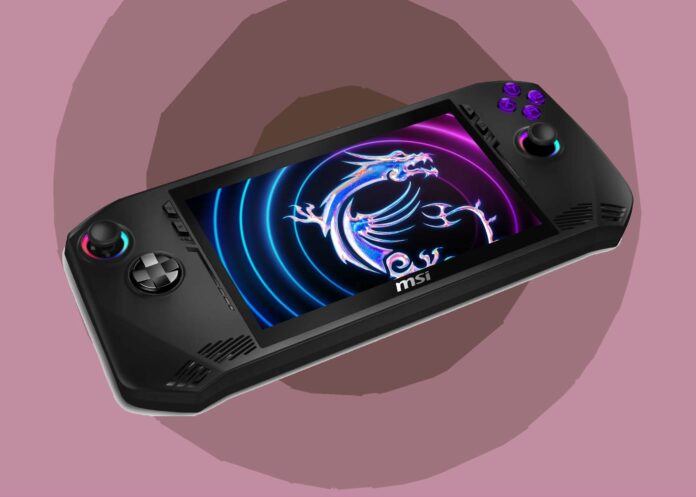While my time with the MSI Claw gaming handheld was limited, it offered a gaming experience comparable to my initial encounter with the Steam Deck. The performance of the device’s new processors will require observation over time, yet the joy derived from the MSI Claw’s Intel processor with Intel Arc graphics is undeniable.
Pros:
- Solid, durable construction
- Vibrant, responsive display
- Intel XeSS technology
Cons:
- Uncharted territory for the processor’s performance
- Expected to come with a hefty price tag

MSI Claw Quick Overview
The MSI Claw, a recent entrant in the PC gaming handheld scene, stands out as the first Intel-powered device, adding excitement and risk for both MSI and Intel. In contrast to AMD’s successful AMD Z1 and Z1 Extreme chips fueling devices like the Asus ROG Ally and Lenovo Legion Go, Intel aims to secure its position in this rapidly expanding market.
MSI takes a bold step by relying on the new Intel Core Ultra processor line, also featured in top-notch laptops unveiled at CES 2024. Reviews of these chips are just emerging, making it premature to gauge if the integrated Arc graphics in the MSI Claw can match the performance of AMD’s RDNA 3 graphics, especially given the higher display quality of 1080p with high refresh rates in the latest AMD-powered handhelds.
Noteworthy at CES is the confidence expressed by MSI and other laptop manufacturers in the capabilities of Intel Arc graphics in the Core Ultra processors. My brief interaction with the MSI Claw supports this confidence. Though I could only test a limited number of titles, they ran flawlessly. With distinct advantages for Intel’s iGPU over AMD’s Z1 series, the MSI Claw not only establishes Intel’s presence in the crucial PC gaming market but also serves as a compelling demonstration of its chip capabilities.

MSI CLAW: Price & Availability
As of now, the MSI Claw lacks fixed pricing and release details. According to MSI, it’s slated to launch between mid-February and mid-March, offering various configurations that will determine the final price.
The base setup, featuring an Intel Core Ultra 5 135H processor and a 512GB SSD, is projected to be priced at $699 (around £560, AU$980). On the other hand, the configuration with a Core Ultra 7 165H processor and 1TB SSD storage is expected to reach $799. The Core Ultra 5 with a 1TB SSD will fall somewhere in between.
Regardless of configuration, the current memory option is set at 16GB LPDDR5. Depending on the initial production success, there might be an expansion in the memory options. As of now, MSI has no official plans for a 32GB memory variant.
Expected Price and Configurations:
| Configuration | Expected Price |
|---|---|
| Core Ultra 5 135H, 512GB SSD | $699 |
| Core Ultra 5 165H, 1TB SSD | Somewhere in between |
| Core Ultra 7 165H, 1TB SSD | $799 |
MSI CLAW Review: Specs
Here’s a breakdown of the MSI Claw’s specifications, ranging from the base to the maximum configuration:
| Specs | Base Configuration | Max Configuration |
|---|---|---|
| Processor | Intel Core Ultra 5 135H | Intel Core Ultra 7 165H |
| Graphics | Intel Arc graphics | Intel Arc graphics |
| Memory | 16GB LPDDR5 | 16GB LPDDR5 |
| Storage | 512GB PCIe NVME | 1TB PCIe NVME |
| Display | 7-inch full HD, 120Hz IPS tough screen, 100% sRGB | 7-inch full HD, 120Hz IPS touch screen, 100% sRGB |
| Connectivity | WiFi 7, Bluetooth 5.4 | WiFi 7, Bluetooth 5.4 |
| Ports | 1 x Thunderbolt 4 USB-C, 1 x MicroSD Card Reader, 1 x 3.5mm audio jack | 1 x Thunderbolt 4 USB-C, 1 x MicroSD Card Reader, 1 x 3.5mm audio jack |
| Battery | 53WHr | 53WHr |
| Dimensions (W x D x H) | 294 x 117 x 21.2mm | 294 x 117 x 21.2mm |
| Weight | 675g | 675g |

MSI CLAW Review: Design
In terms of design, the MSI Claw shares a familiar feel with new PC gaming handhelds. Yet, MSI’s distinct choices stand out, aligning with its renowned gaming laptop aesthetics and bold gamer styling.
Drawing from its strong gaming laptop lineage, the Claw boasts similarities but also brings functional differences. The cooling system, larger than the ROG Ally’s, adds thickness to the device. The open venting at the back ensures ample airflow, keeping the Core Ultra processor cool.
Unique features include back buttons for custom macros, absent in competitors. Opting for FHD resolution and a 120Hz refresh rate, the Claw offers a slightly less crisp picture than the Legion Go’s QHD display. However, on a compact screen, 1080p proves more than sufficient, delivering a fantastic visual experience.
Comparatively, the MSI Claw is heavier than the Steam Deck but maintains a manageable size. The front buttons, controlling functions like accessing the MSI Center M interface or settings screen, could use clearer explanations. Despite running somewhat hot under load, a common trait, the Claw effectively dissipates heat from the device.
MSI CLAW Review: Performance
In my brief experience with the MSI Claw, I couldn’t conduct formal benchmarks due to time constraints. However, playing games like Sonic Superstars and Assassin’s Creed: Mirage showcased impressive performance without significant issues.
Opting for Sonic emphasized the 120Hz refresh rate, revealing crisp visuals without screen blur or tearing. The 8 Xe cores in the Intel Arc integrated GPU, particularly in the Core Ultra 7 165H, demonstrated commendable graphics performance, drawing around 30-35W.
Intel’s Arc graphics driver improvements instilled confidence, though older games, especially the pre-DX9 era, may encounter challenges. For DirectX11 or higher games, the experience is expected to be smoother.
Audio quality on the handheld is robust, and suitable for non-headset gameplay. In my 20-minute trial, the 53WHr battery showed minimal depletion. The exact duration remains uncertain until a formal review, but MSI and Intel suggest around two hours of full-performance gameplay.
Early Verdict
While a comprehensive review awaits detailed benchmarks and more gameplay, the initial impressions of the MSI Claw are quite promising. Intel Arc exhibits robust hardware, especially with AI cores powering XeSS super sampling for enhanced frame rates and visual quality. Expect higher frame rates on the MSI Claw compared to the Asus ROG Ally.
Although the price is a bit steep, it aligns with the market, and the device distinctly carries MSI’s aesthetic signature. The MSI Center M, learning from predecessors, keeps things simpler.
Relying on observation and intuition, it seems MSI and Intel have crafted a standout device in a competitive field. The true test, set for February or March, will reveal if Intel’s Core Ultra processors can steer the next wave of PC gaming handhelds or if AMD maintains its market lead.

